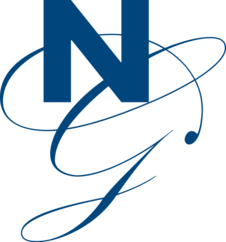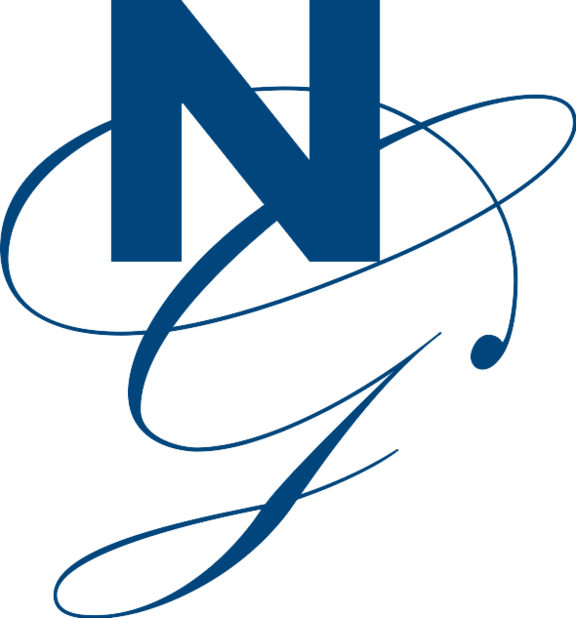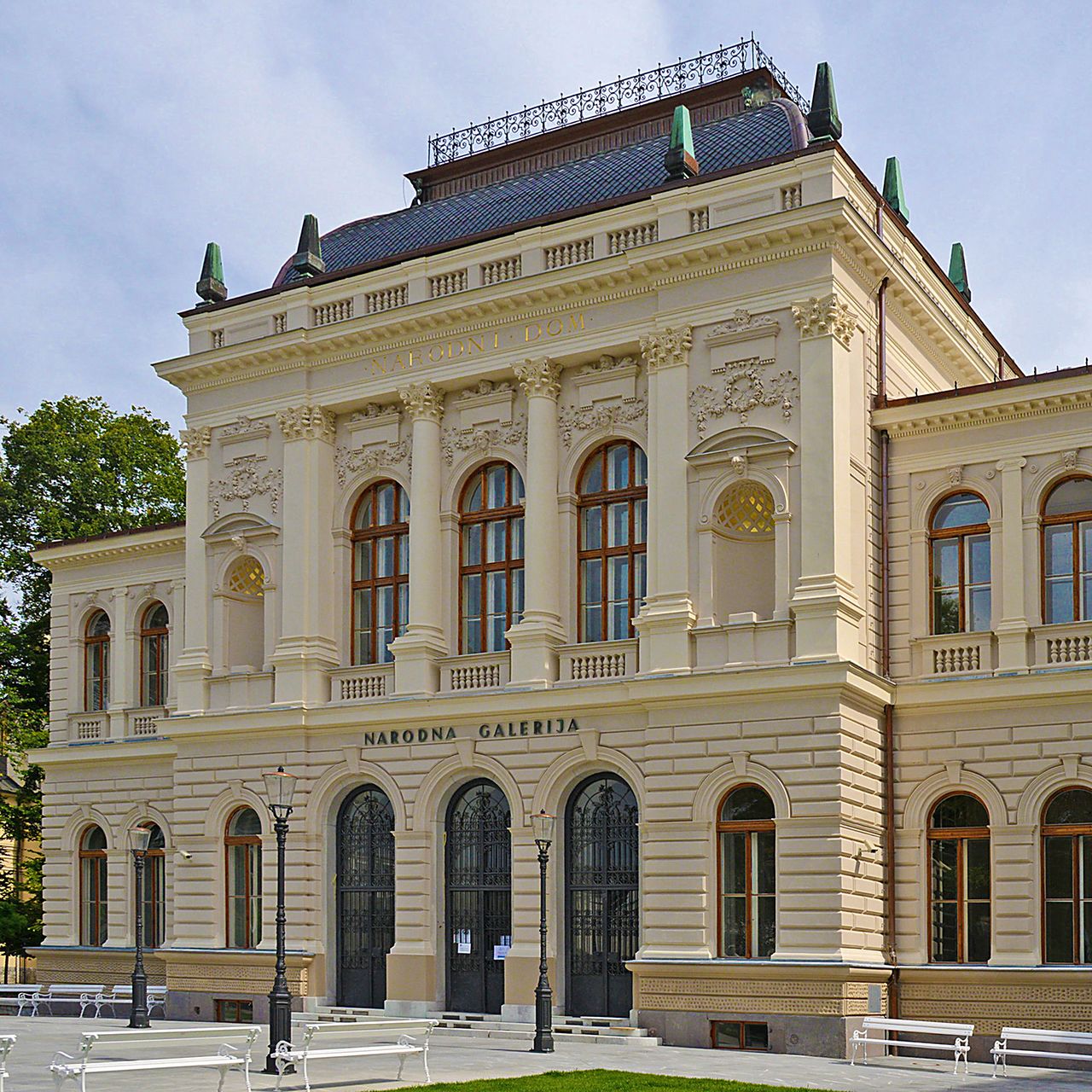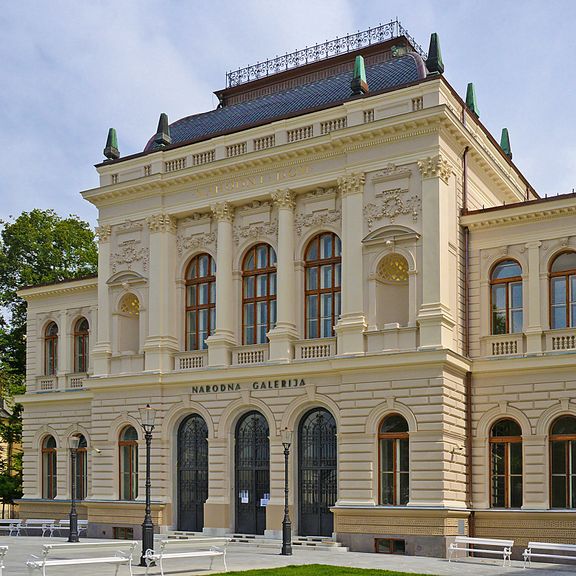Difference between revisions of "National Gallery of Slovenia"
(added link to Beti Žerovc article) |
(fb) |
||
| Line 22: | Line 22: | ||
}} | }} | ||
| + | | accounts = | ||
| + | https://www.facebook.com/ngslo | ||
}} | }} | ||
Revision as of 19:36, 23 May 2014
-
to
30 Jan 2025
25 May 2025
National Gallery of Slovenia will be collaborating with Viennese museum Belvedere in order to exhibit the best of Slovenian painting between 1848-1918 in the biggest exhibition of Slovenian art in Vienna to date: "The World in Colours. Slovenian Painting 1848-1918 - Svet v barvah. Slovensko slikarstvo 1848-1918".
-
to
2 Dec 2020
31 Jan 2021
Alan Ford’s Lap of Honour, a guest comics exhibition by the National Gallery of Slovenia and the Institute of Culture and Education and Glavan Antiquariat in Ljubljana, hosted by the Museum of Yugoslavia in cooperation with the Italian Institute of Culture in Belgrade and the Yugoslav Film Archive, promoted by the Embassy of the Republic of Slovenia Belgrade
-
to
17 May 2019
16 Sep 2019
Impressionism from Dawn till Dusk. Slovenian Art 1870–1930, a large-scale exhibition organised by the National Gallery of Slovenia
-
to
5 Dec 2018
14 Jan 2019
Šubic in the Land of Classical Greece exhibition presenting mural paintings in the Schliemman's house in Athens by Jurij Šupic (1855-1890), in collaboration with the National Gallery of Slovenia and the Embassy of the Republic of Slovenia Athens,
-
to
13 Apr 2018
6 Aug 2018
Poetry of Silence, an exhibition of works by Zoran Mušič, featuring loans from Moderna galerija / Museum of Modern Art, Ljubljana plus Museum of Contemporary Art Metelkova and National Gallery of Slovenia, supported by the Slovenian Culture and Information Centre, Vienna (SKICA) (Embassy of the Republic of Slovenia Vienna),
-
26 Jan 2018
A symposium on Zoran Mušič's opus, with Andrej Smrekar (National Gallery of Slovenia) Zdenka Badovinac and Marko Jenko (Moderna galerija / Museum of Modern Art, Ljubljana plus Museum of Contemporary Art Metelkova participating,
-
to
21 Oct 2016
12 Feb 2017
Is that Biedermeier?, a painting exhibition featuring several works by Slovenian artists, courtesy of the National Gallery of Slovenia,
-
to
12 Jul 2014
12 Oct 2014
An exhibition of crucifixes and wooden sculptures from the time of the Patriarch of Aquilea Pellegrino II also featuring four crucifixes from Slovenia, one from the National Gallery of Slovenia,
-
to
18 Jan 2014
20 Apr 2014
The exhibition 1914, organised in the framework of Riga - the European Capital of Culture, featuring works by France Kralj and Tone Kralj (Božidar Jakac Gallery), Fran Tratnik (National Museum of Contemporary History), and Ivan Vavpotič (National Gallery of Slovenia)
-
to
18 Apr 2013
13 Jul 2013
Slovene Impressionists and their time 1890–1920 exhibition organised by the Petit Palais and the National Gallery of Slovenia in cooperation with the Embassy of the Republic of Slovenia Paris
History
The National Gallery of Slovenia was founded in 1918 as the National Gallery Society with the aim of establishing a museum of Slovene fine art. In a relatively short time it succeeded in bringing together works from both public and private collections, including works by Slovene artists purchased by the City of Ljubljana and works belonging to the Society for Christian Art; it also began to systematically purchase other works of art.
The National Gallery was originally housed in the Kresija Building, where a permanent exhibition was opened to the public in 1920. An important acquisition was 90 paintings from the Strahl Collection. In the early 1930s the gallery was also allocated casts of classical sculptures and works belonging to the National Museum of Slovenia. Then in 1933, after extensive renovation, the National Gallery opened its Narodni dom building, where it remains to this day. After the Museum of Modern Art opened in 1947, many of the National Gallery's 20th-century art works were transferred to the new museum.
Collections
From its inception the National Gallery has systematically and continuously collected Slovene art in order to provide a comprehensive survey of artistic development in Slovenia. It also collects some works by artists from other European nations, presenting them in different arrangements. However, the gallery had to wait for larger premises – achieved by the construction of a new wing in the early 1990s – before it could present a permanent collection of European Old Masters. This collection is now displayed in the upper rooms of the new wing while on the ground floor there is an exhibition area for temporary exhibitions, educational activities and the National Gallery of Slovenia Library.
Art in Slovenia
The Slovene art collection represents the core of the activity of the National Gallery of Slovenia. The medieval collection consists mainly of Gothic sculpture from the late Romanesque to the early Renaissance periods, plus some original fragments of Gothic frescoes.
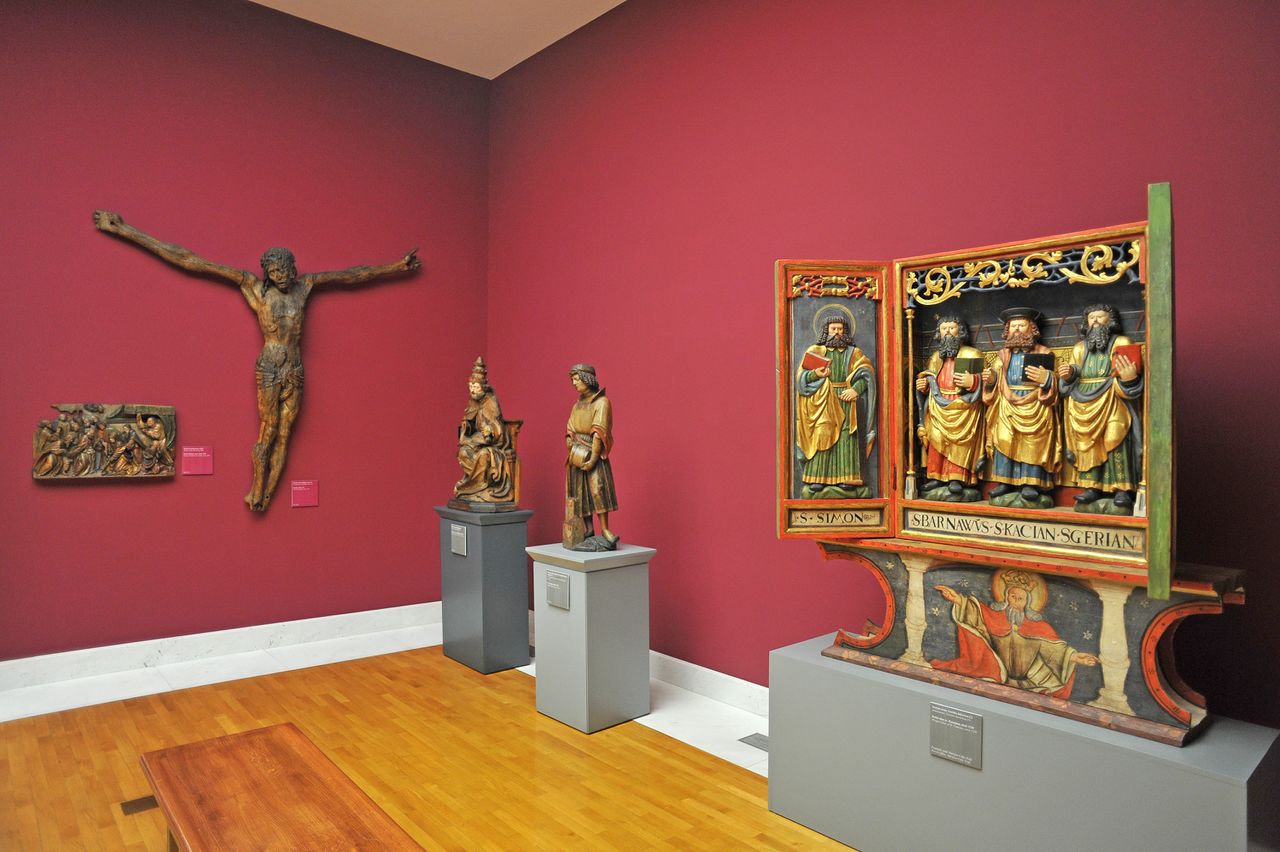 The former set up of the permanent collection of the National Gallery of Slovenia in 2013.
The former set up of the permanent collection of the National Gallery of Slovenia in 2013.
The survey continues with 16th- and 17th-century art, in which Baroque paintings are particularly well-represented. Representative works by masters such as Anton Cebej, Valentin Metzinger, Franc Jelovšek, and Fortunat Bergant are presented in the main hall. The survey of the Baroque period is complemented by some selected sculptures, most of them made by artists from Štajerska. The Classicism section is best represented by the monumental paintings of Franc Kavčič. The Biedermeier and Romantic period section includes portraits by Jožef Tominc and Mihael Stroj and landscapes by Marko Pernhart and Anton Karinger. The survey of Realism focuses on the work of the Šubic brothers, Janez and Jurij, on the important educator Anton Ažbe, and on Jožef Petkovšek. The presentation of the period is enhanced by popular paintings created by Ivana Kobilca. It is followed by the generation which introduced Modernist creative trends to Slovene painting. Four painters (Rihard Jakopič, Ivan Grohar, Matija Jama, and Matej Sternen), traditionally conceived as the Slovene Impressionists, combined different contemporary art trends, from Impressionism to Divisionism, to create the foundations for the development of modern art in Slovenia. The survey concludes with a generation of sculptors who are an important counterpart to the painters of the modernist period. Works by Alojz Gangl, Ivan Zajec and France Berneker are especially prominent.
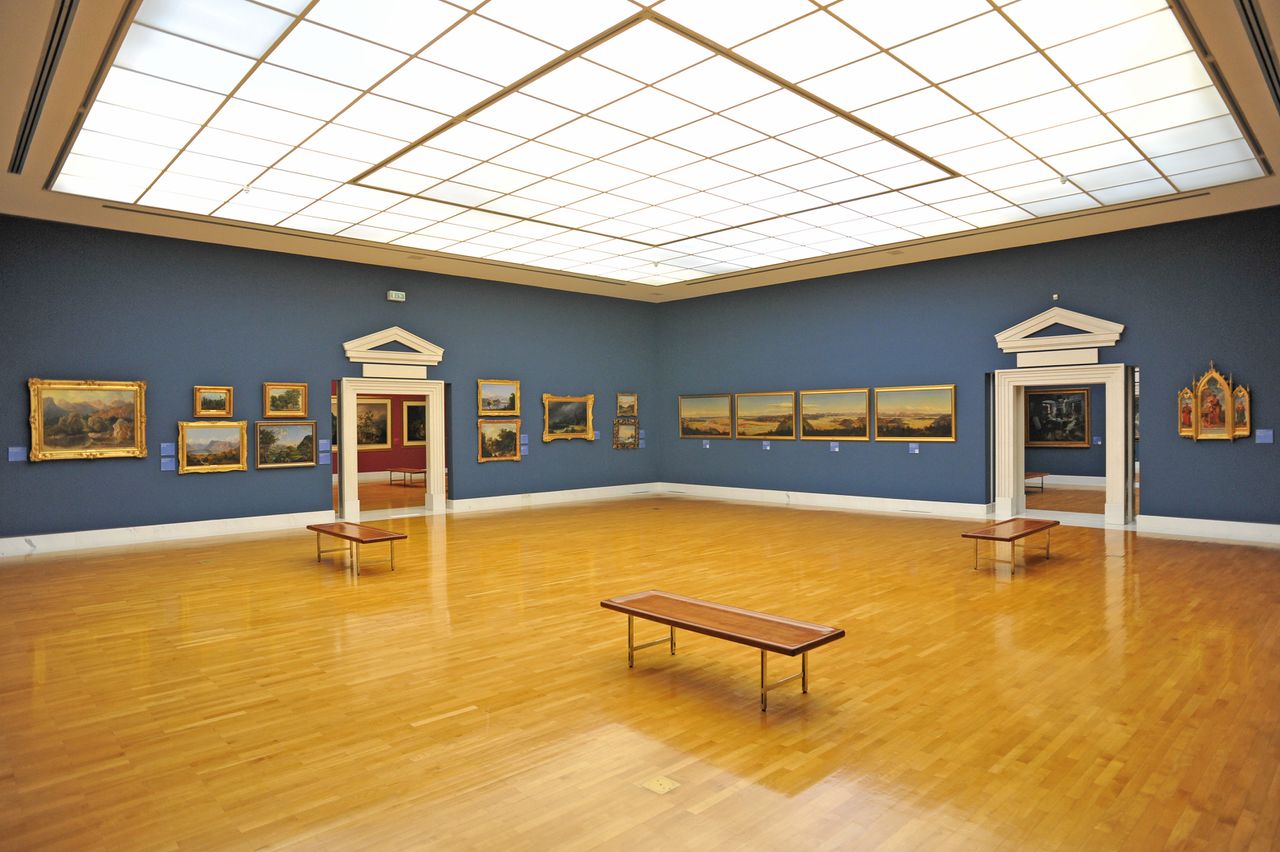 The former set up of the permanent collection of the National Gallery of Slovenia in 2013. Reinstalled in 2016.
The former set up of the permanent collection of the National Gallery of Slovenia in 2013. Reinstalled in 2016.
European Paintings
Opened in 1997, the permanent collection of over 150 European paintings dating from the late-14th to the 20th century is the fruit of research work carried out by Ksenija Rozman in cooperation with renowned Italian expert Professor Federico Zeri. The collection is divided into individual schools: Italian (the largest group), Spanish, French, Flemish and Dutch, German and Central European schools, and painters of the 19th and 20th centuries. Among the late Gothic works, the triptych (1511) of the Knillenberg family by Marx Reichlich is of particular note, as are the paintings of Luca Giordano among the Italian Baroque works, and the works of French portraitist Élisabeth Vigée-Lebrun among the portrait collection. Prominent among the German painters are Paul Troger and Martin Johann Schmidt (Kremser-Schmidt), while the modern paintings include a remarkable still-life by Alexej von Jawlensky and a landscape by Giorgio Morandi.
Exhibition programme
The museum's programme counts approximately 20 thematically and epochally diverse exhibitions and events per year. The majority of them are prepared by the house curators, some are acquired by exchange with international institutions or prepared by other Slovene organisations (e.g. Biennial of Slovene Visual Communications).
Among significant thematic presentations of foreign collections was the Reason and Feeling. Overview on the 19th Century in Tuscany exhibition of portraits from Uffizi Gallery from Florence, which was prepared in collaboration with the Italian Cultural Institute in Slovenia in 2010.
Slovene Impressionists and their Time 1890–1920
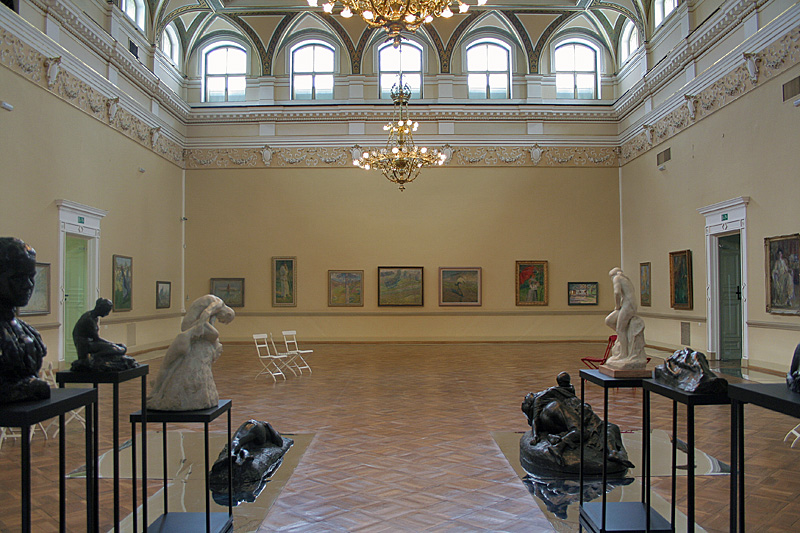 Slovene Impressionists and their Time 1890â1920 exhibition at the main gallery hall of the National Gallery of Slovenia in Ljubljana, 2008â2009.
Slovene Impressionists and their Time 1890â1920 exhibition at the main gallery hall of the National Gallery of Slovenia in Ljubljana, 2008â2009.
From April 2008 to February 2009 the museum featured Slovene Impressionists and their Time 1890–1920, which attracted 112,000 visitors, a record attendance for an exhibition of this kind in Slovenia. The exhibition was prepared by house curators on the occasion of the Slovenian Presidency of the European Union and the 90th anniversary of the National Gallery of Slovenia. The exhibition tried to contextualise the historical environment of the late 19th and early 20th century with works of four Slovene master Impressionists – Rihard Jakopič (70 works), Ivan Grohar, Matija Jama (exhibited 26 paintings from each) and Matej Sternen (more than 26 works) – and many famous fellow Impressionist artists, such as Anton Ažbe, Ivana Kobilca, Ferdo Vesel, Ivan Vavpotič and more. Additionally the show foreshadowed the sculptural, photographic, and architectural achievements of the time, when the 1895 Ljubljana earthquake spawned a "revival" in the city as over 400 new Art Nouveau, particularly Secessionist, buildings and significant monuments sprang up in the re-construction period from 1986–1910.
A logical continuation was the exhibition Polish Painting circa 1900, Impressionism and Symbolism prepared in cooperation with the Polish National Museum in late spring 2009.
The exhibition Slovene Impressionists and their Time 1890–1920 is shown at the Petit Palais in Paris from April through July 2013.
 Slovene Impressionism and their Time 1890–1920 exhibition at Petit Palais, Paris , 2013
Slovene Impressionism and their Time 1890–1920 exhibition at Petit Palais, Paris , 2013
Iconotheca Valvasoriana
At the very end of 2009 a facsimile edition of the Iconotheca Valvasoriana was published by the Janez Vajkard Valvasor Foundation at the Slovene Academy of Sciences and Arts (SAZU) in 17 volumes. They have been donated to the National Gallery by the Ministry of Culture of the Republic of Slovenia. Prints, drawings and watercolours of various formats, which Valvasor bought on his travels across Europe between 1659 and 1672, and had bound into eighteen books (today one lost), were arranged by the author according to technique, the artist's ethnic origin and themes: depictions of the Old and New Testament, images of saints, antique motifs and diverse secular genre scenes, portraits, coats-of-arms, vedute, maps, as well as the animal and plant kingdom. Among them are works by Albrecht Dürer, Lucas Cranach, Martin Schongauer, Jacques Callot, as well as other European masters of the 16th and 17th century. The facsimile edition of the Iconotheca Valvasoriana is an important acquisition of the library fund of the National Gallery of Slovenia.
The Robba Fountain
Francesco Robba (1698–1757) created the fountain between 1743 and 1751, and modelled it on the famous Roman fountains. The sculptures of the three river gods decorating it most probably represent three rivers in the then province of Carniola, namely the Sava, the Ljubljanica and the Krka. After the original fountain was removed from in front of Ljubljana's town hall and replaced by a copy, it now – refurbished and restored – resides in the space which was primarily constructed for this purpose in 2001.
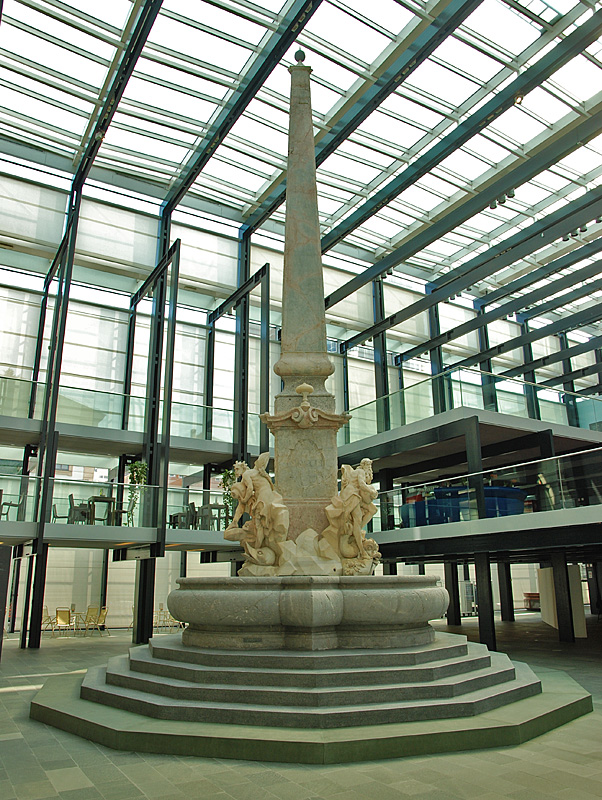 The restored Robba Fountain by Baroque sculptor Francesco Robba was installed in the National Gallery of Slovenia entrance hall in 2006.
The restored Robba Fountain by Baroque sculptor Francesco Robba was installed in the National Gallery of Slovenia entrance hall in 2006.
Modern art exhibitions
The National Gallery also prepares monographic exhibitions of Slovene and international authors, for example the 2008 exhibition What I Have Seen 1968–2008 by a personality central to Slovene graphic design and illustration, Kostja Gatnik.
In summer 2009 together with the TR3 Gallery, the National Gallery featured an exhibition of 117 photographs by American artist Robert Mapplethorpe, one of the most important conceptual photographers of his generation.
International cooperation
With partners like the Urban Planning Institute of the Republic of Slovenia and the Municipality of Ljubljana, the National Gallery of Slovenia has participated in the activities of the international Réseau Art Nouveau Network, which has received funding from the EU programme Culture 2000. Concurrently with the exhibition Slovene Impressionists and their Time 1890–1920, the National Gallery presented the multimedia presentation Art Nouveau & Society – a short and concise presentation of the social and economic situation in Europe at the turn of the 19th and the beginning of the 20th century, which created favourable conditions for the development of the pan European movement for the modernisation of art: Art Nouveau.
During the Slovenia's Presidency of the Council of the European Union in 2008, the National Gallery of Slovenia prepared a representative exhibition of the architect Jože Plečnik (1872–1957) in the Musées royaux de Beaux-Arts de Belgique in Brussels.
Music programme
Since 2001 the National Gallery hosts each year a cycle of concerts by the Slovene Philharmonic String Chamber Orchestra, entitled Harmony of the Spheres [Sozvočja svetov]. The events combine lectures on fine arts with concerts of chamber music.
Educational and publishing programme
The gallery is appreciated for its educational activities which employ different methods to reach target groups from pre-school children to high school students to adults. The National Gallery of Slovenia Library gives visitors access to the latest periodicals and published books on Slovene art and the art of the east Alpine region.
Artworks loan, venue hire
The National Gallery also loans its artworks and photo material for exhibitions and publications following international standards. It is also possible to hire the gallery spaces for events.
See also
External links
- National Gallery of Slovenia website (in English)
- National Gallery of Slovenia on Wikipedia
- Réseau Art Nouveau Network website
Projects
- Art Nouveau & Society multimedia presentation on National Gallery website
- Art Nouveau & Society project description on Cultural Contact Point Slovenia database
- The Reason and Feeling exhibition's web page
- Information on the Slovene Impressionists and their time exhibition in Petit Paris, Paris, 2013
- Slovene Impressionists and their time catalogue, free for iOS devices (in English)
- Article on Academia.edu by Beti Žerovc about Ivana Kobilca
Gallery
The query result could not be obtained from the SPARQL database. This error might be temporary or indicate a bug in the database software.



